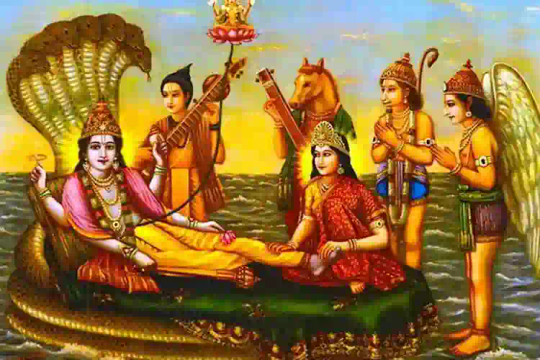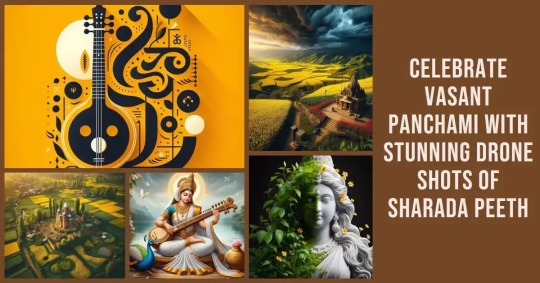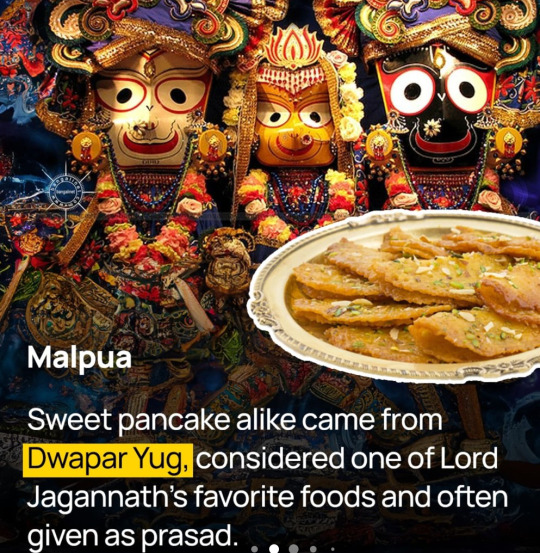#Hindu Tradition
Explore tagged Tumblr posts
Text

A Nagi, or female Naga, a type of shapeshifting magical reptilian humanoid found in many Southeastern Asian mythologies.
#nagi#nagini#naga#nagas#snake people#snake woman#guardians#Patala#Hinduism#hindu tradition#hindu texts#buhddist#jainism#mythical art#ai art#furry art#furry oc#mythological creatures#alteredai#zootropic art#humanoid animals#anthropomorphism#anthropomorfic#anthropomorphic art
6 notes
·
View notes
Text

15x8 Interlaced Dots
#rangoli#dot rangoli#rangoli designs#rangoli art#kolam#kolam designs#kolam art#muggulu#floor art#threshold art#street art#indian art#traditional art#indian traditional art#indian culture#indian tradition#hindu culture#hindu tradition#south indian#early morning ritual#keeping the tradition alive#passion#art#my art#artist#artists on tumblr#hindu festivals#ugadi#ugadi festival#shobhakruth nama samvatsara
21 notes
·
View notes
Text
Ramayana No. 10: Narada: The Celestial Sage and Divine Messenger of the Ramayana
As I continue my journey through the Ramayana, I’ve chosen to explore this epic using multiple versions: the abridged Valmiki translation, the comprehensive Gita Press edition, and the detailed Debroy translation. This approach allows me to compare different interpretations and uncover nuances that might otherwise go unnoticed. For those interested in exploring these different versions, both the…

View On WordPress
#ancient scriptures#Bhakti#comparative religion#comparative study#Dharma#divine messenger#Divine Wisdom#epic literature#Gita Press#Hindu epics#Hindu mythology#Hindu sages#Hindu texts#Hindu tradition#Indian literature#Indian spirituality#Mythology#Narada#Narada Bhakti Sutra#Ramayana#religious studies#righteous living#Sacred texts#sages#spiritual growth#spiritual guide#Spiritual teachings#Valmiki#Vedic wisdom
0 notes
Text
Munjya: Unraveling the Ghostly Legend & Sacred Thread
Share your thoughts on Munjya and the Janeu! Have you heard any spooky stories or personal experiences? Let's chat! 👇
Munjya: The Ghost, the Thread, and a Tale of Ancient Tradition Unveiling the Mystery of MunjyaKonkan Vibes and Scary StoriesThe Janeu: Not Your Average ThreadThe Thread of LifeMunjya: The Ghost with a GrudgeDecoding the Janeu: A Sacred Thread of SignificanceThe Janeu: More Than Meets the EyeNames Galore:Upanayana: The Thread CeremonyThe Symbolism Behind the ThreadJaneu: Your Spiritual…
#culture#ghost#Hindu tradition#India#janeu#Konkani folklore#munjya#poonal#religion#ritual#sacred thread#spirit#thread ceremony#Upanayana#yagnopavit
0 notes
Link
Holi, also known as the Festival of Colors, is a vibrant and joyous Hindu festival celebrated primarily in India and Nepal.
#newsprovider#newsprovidernetwork#thegyaaneeknowledge#vigyaanrahashya#happy holi#happy holi 2024#holi#rohitsharma#ipl#ipl 2024#whats wrong with me#whats wrong with india#india#indian#hindu#hindu tradition#tradition#holikacelebration#holikadahan#interesting facts#facts
1 note
·
View note
Text

#Rama Ekadashi Vrat Katha#Rama Ekadashi Vrat#Rama Ekadashi Katha#Rama Ekadashi#auspicious day#Hindu tradition
0 notes
Text
#Ram Lalla#Ram Mandir#Ayodhya#Lord Ram#Hinduism#Divine Child#Spirituality#Temple Construction#FaithIn Ram#Cultural Heritage#Religious Harmony#Pilgrimage#SacredIdol#Ramayana#Divine Blessings#Ayodhya Land Dispute#Supreme Court Verdict#Hindu Tradition#Religious Unity
0 notes
Text
#Sahasralinga#Karnataka#Divine Carvings#Shivaratri Festival#Sacred Heritage#Short Film#Spiritual Journey#Lord Shiva#Nature And Devotion#Mystical Experience#Hindu Tradition#Explore The Divine#Sacred Artistry#Shorts Video#Travel Karnataka
0 notes
Text
The Festival of Colors - Indians Celebrate "Holi" to spread happiness
Holi is one of the most popular and widely celebrated festivals in India, observed in the spring season, usually in February or March. This festival is also known as the “Festival of Colors” because it involves throwing colored powder and water at each other. Holi has both religious and cultural significance and is celebrated by people of all ages, religions, and backgrounds across the…

View On WordPress
#color#culture#festival of color#hindu culture#hindu tradition#hinduism#holi#India#Indian culture#life#spreading color#tradition
0 notes
Text



Tales of Nagas can be found in Hindu, Buddhist and Jainist legends and in the mythology and folklore of many Southeast Asian peoples.
In Hindu traditions, they are frequently described as chthonic deities, or agents of the Underworld, or being associated with water, especially water that comes from underground.
They live in the netherworld called Patala, which is the beautiful underworld of Hinduism.
They could be a positive or negative force in different tales, but were also portrayed as very clever and enormously powerful. They often stood as guardians, and made ferocious defenders of items the gods had given them to protect.
However outside of their guard duties, their actions tended towards the benevolent, or at least neutral
They could be coldly calculating, but also their tremendous intelligence made them more likely to think before acting, carefully weighing their options and decisions.
#naga#nagas#nagi#nagini#snake people#snake woman#hindu tradition#bhuddism#hinduism#hindu mythology#hindu texts#jainism#buddhism#buddhist#southeastasia#southeast asia#ai art#humanoid art#humanoid animals#anthropomorphism#anthropomorphic art#furry oc#furry art
5 notes
·
View notes
Text

23×7 Straight Dots
#rangoli#rangoli designs#rangoli art#kolam designs#kolam art#muggulu#indian art#traditional art#indian traditional art#indian tradition#indian culture#indian festivals#hindu tradition#hindu culture#hindu festivals#south indian#kolam#passion#art#my art#artist#artist on tumblr#diwali#deepavali#deepawali#deepa#deepa rangoli#diwali rangoli#deepavali rangoli#deepawali rangoli
2 notes
·
View notes
Text

Took 5 hrs and 2 attempts 😭💟✨
#desiblr#desi academia#desi indian#being desi#desi#desi girl#desi rant#desi shit posting#desi love#just girly thoughts#hand drawn#drawing#tumblr draw#my draws#religious art#traditional art#my artwrok#artwork#my art#krishna#radha krishna#hare krishna#hindublr#hinduism aesthetics#hindutva#hinduism#hindu gods#hindu#i love him so much
296 notes
·
View notes
Text
Vasant Panchami: Colors, Knowledge, Rebirth
Loved this Vasant Panchami guide? Share your own festival experiences or questions below! 👇
Image Source Newspatron Creative Team – [Read More] Images Generated using AI – [Newspatron] Discover the Spirit of Vasant PanchamiDive Deeper: Your Complete Guide on [Newspatron Site]Download Images Celebrate the arrival of spring with Vasant Panchami, a vibrant festival steeped in knowledge, creativity, and new beginnings. Learn about its traditions, symbolism, and ways to welcome the…

View On WordPress
#creativity#Hindu festivals#hindu temple#Hindu tradition#india festivals#indian traditions#Kashmir#knowledge#saraswati#Sharada Peeth#spring festival#vasant panchami
0 notes
Note
One problem with Hindus (especially conservative ones) is that they support various gender expressions and identities as long as it's related to mythology
Like we see girls in drag cosplaying Krishna and that's widely accepted. They do drag for other mythological characters as well. We see men in drag in mythological theatrical productions but if a man is in drag that's NOT related to mythology, he'd get shamed. Same thing with men being and acting feminine (no doubt, positively in this case) as long as it's related to a mythological act, or scene. Graceful male traditional dancers for example, are fine. But if that same man dances "femininely" to a Western song, he gets called slurs.
And then the trans topic is an entirely different topic.
Ykwim?
Yeah, IKR?
Vishnu turns into Mohini to get the Amrit from the Asurs? A-OK
Lakshmi having feelings for Her Narayan even in that form? *Le gasp* Paap! Anuchit! Dandaniya!
Men acting/looking feminine? *Insert all the hu mofo bian insults you can think of*
Ardhanarishvar being partly both Male and Female at once, and hence neither as a whole? *BrIlLiAnCe Of SaNaTaN dHaRmA!! Rahhh!! InInIn!! 🦚🦚🦚*
Non-binary people? Intersex people? *ThEy ArE (r-slur) pEoPlE wItH bRaInRoT fRoM pRoPaGaNdA!!!*
Don't these people love yapping about their favourite scriptures? Don't they read them? Don't they know that Para Brahman (I'd have said Debi, but not everyone is open to accepting anything besides what they've stuffed in their craniums for so long, so generalising...) is in everything in this Universe?
I don't mean only humans, or even living beings. Every atom is supposed to hold Para Brahman, the same way They hold the Universe within Themself
#conservative hypocrisy#hindublr#desiblr#hinduism#our languages most likely don't have gender specific words to refer to someone anyway#you know how they say you can be gay and still be homophobic?#this is pretty much just like that#you can be a hindu and still be hinduphobic#corrupting our culture and traditions#shallow surface-level theoretical idea of our teachings but no practical application
97 notes
·
View notes
Text






The evolution of Indian cuisine through the ages. Each dish tells a story of its time."
#desiblr#desi girl#yugas#hindutva#hindublr#hinduism#desi tumblr#being desi#desi tag#desi aesthetic#desi#desi academia#indian traditional#indian food#indian cuisine#hindu mythology#pani puri#mahabharat
113 notes
·
View notes